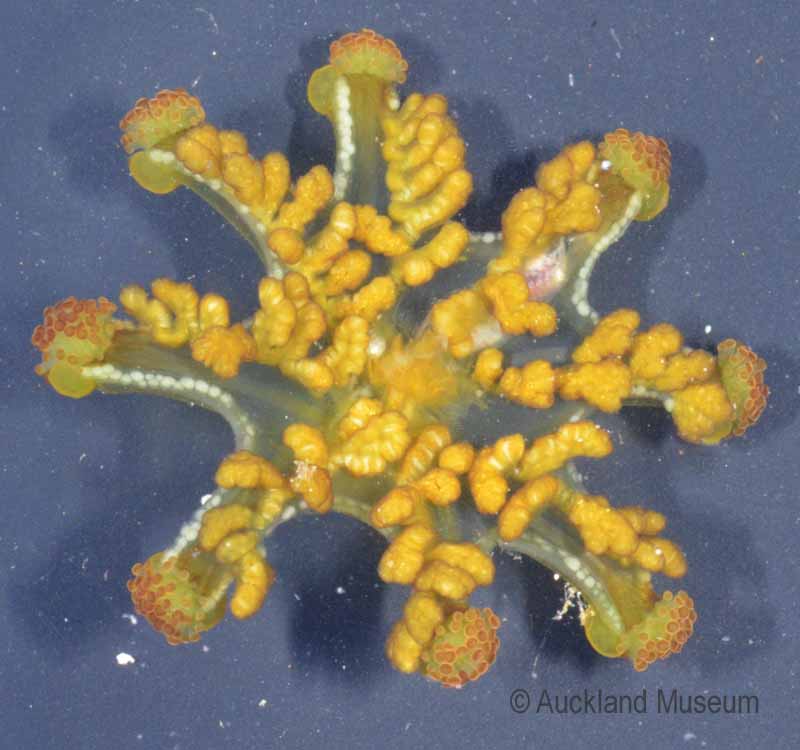

We all know jellyfish that float around at sea, but this wee jellyfish (about the size of a one-dollar coin) sticks itself onto the stalks of seaweed. The first stalked jellyfish found in New Zealand was found at Stewart Island, and then recently they were also found in the Taputeranga Marine Reserve on Wellington’s south coast. This is definitely a new record for the Three Kings, and is the furthest north it’s been seen (actually it’s difficult to get much further north!).
Kareen says the stalked jellyfish can move if it wants to – it can unstick itself and then tumble along using its sticky pads in a very
slow motion forward roll.





9 Responses to “New find for the Kings: stalked jellyfish”
philippe zintzen
Congratulations to the invertebrate team. C’est magnifique !!!
Darryl Torckler
Wow, that is really awesome, if I came across these I would have never know these were jellyfish. Did Richard or Ian get any close-up underwater pics of the jellyfish on the seaweed?
Melanie Cooper
No pictures with the jellyfish in place on the seaweed but definitely more great images to come!
Allen Collins
Any shots from the side? I am curious of the length of the stalk, and the overall shape of the calyx. The former looks “short” and the latter pretty flat, but it would be nice to see. This seems to be in that Kishinouyea/Lucernariopsis group that is very widespread, and the only stauromedusae known from the tropics. Sticky pads on the arms, and the arms only slightly paired. Species boundaries and variation are in much need of documentation in this group. Very cool animal; great find!
Loty
Nice
Kareen Schnabel
We don’t have any photos from the side but you are right, the calyx is very short. We have put the specimen into Formalin and one of the pad clippings went into Ethanol for molecular analysis. This species looks very similar to the Kishinouyea that we have been finding off the Wellington coast (although the arm surface is smooth in the Wellington species, this specimen had its arms decorated with small nodules, do you know the purpose of these?). We recently had Lucilia Miranda Souza from the University of Buenos Aires visit and she has taken a few samples of our Wellington Kishinouyea and Lucernariopsis for her work. We added a few photos of our species to our NIWA Invertebrate Collection Facebook page, please take a look if you can (search “NIWA Invertebrate Collection” on Facebook). So far, we are calling our species Kishinouya cf. ngagatensis and we are curious to find out how this Three Kings species relates to other species known.
Loty
Fantastic!!!!!!!!
Simon Anderson
Some great images & video – how about shooting the video in high def/1080 – those gopro cameras should be up to it
Melanie Cooper
Hi Simon the camera is up to it, sadly our budgets aren’t! Unfortunately it’s pretty pricey to send data off back off the ship so the videos – as lo res as they are – are a bit of a luxury!
View Some of our Related Posts